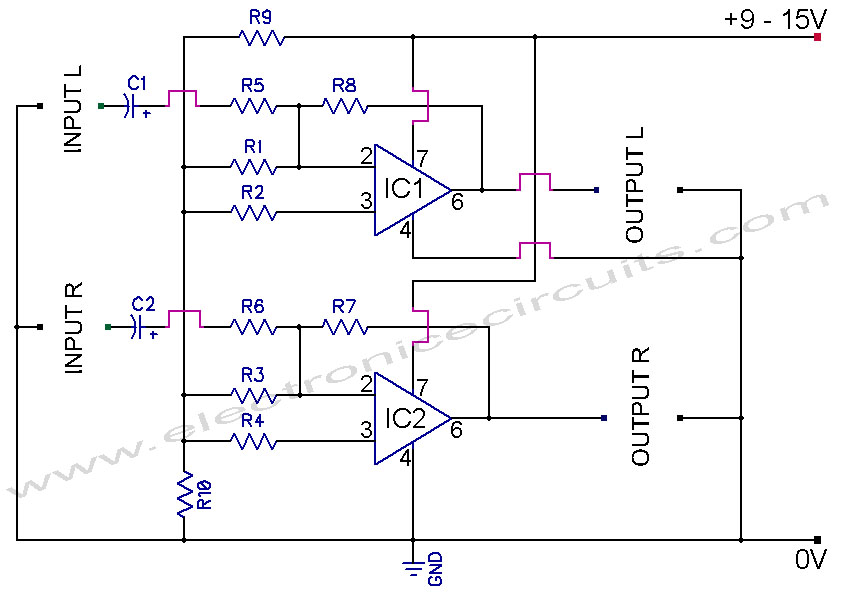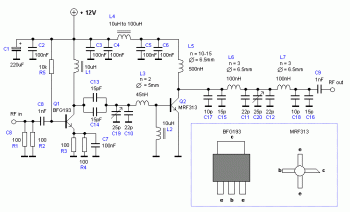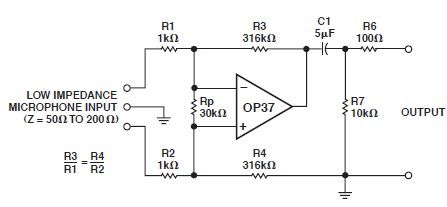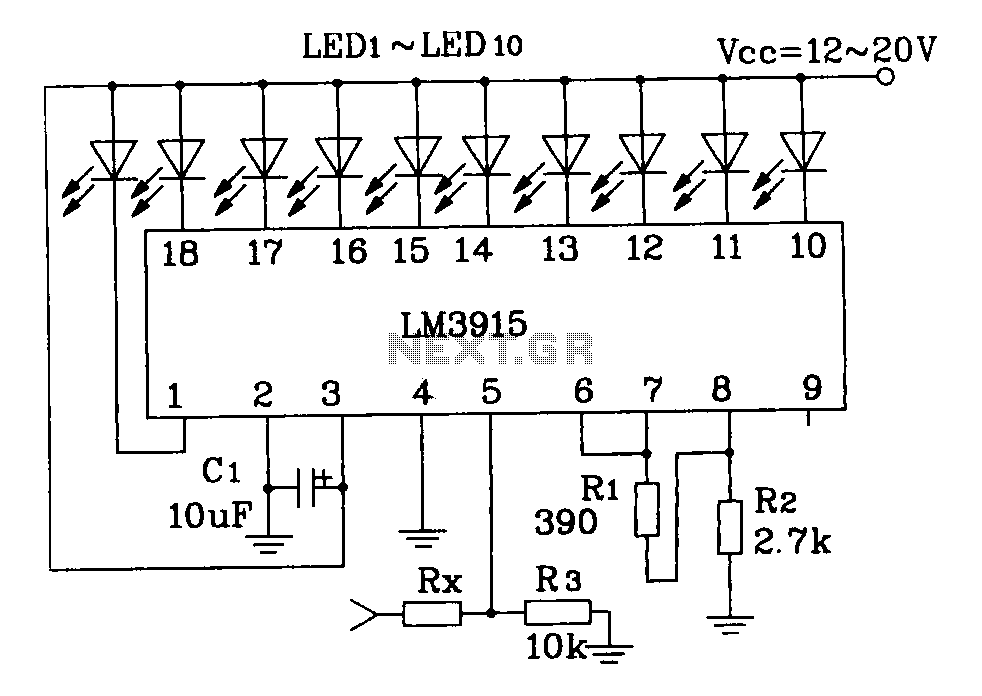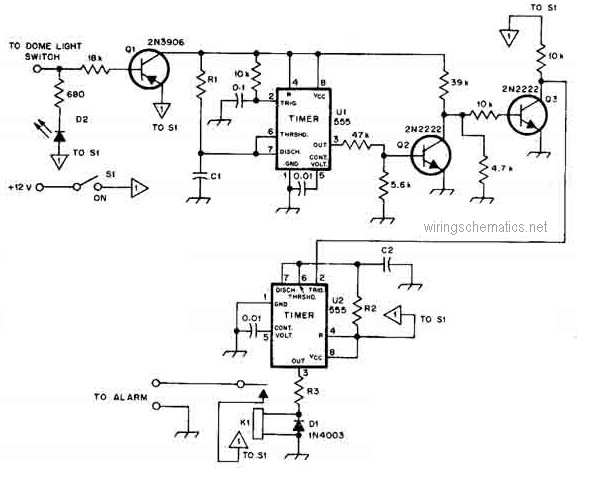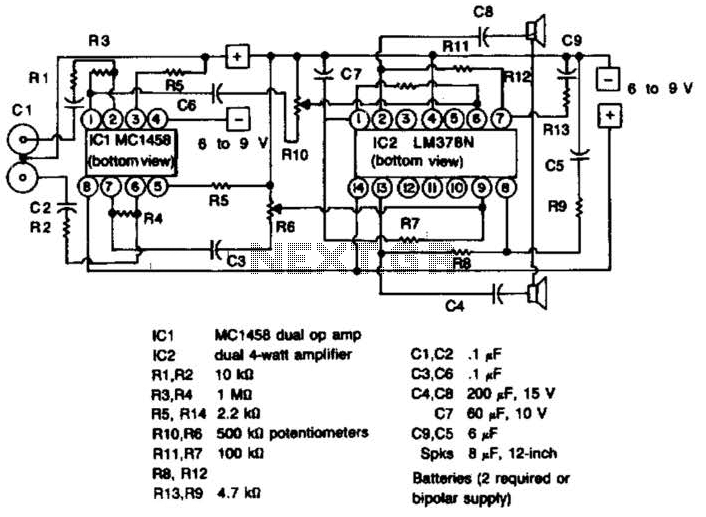
Transmitter Precision Thermocouple Amplifier Circuit
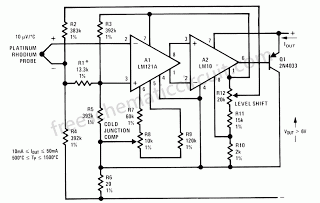
This circuit demonstrates how a low-drift preamplifier can enhance the measurement resolution of a thermocouple. The preamplifier is powered by the reference regulator, and bridge feedback is employed to bias the preamplifier input within its common mode range. Cold junction compensation is implemented with the offset voltage set into amplifier A1, which is directly proportional to absolute temperature. The maximum drift specification for the preamplifier is 0.2 µV/°C. In this specific circuit, an equivalent drift component would yield 0.004%/°C on the reference and 0.001%/°C mismatch on the bridged configuration. The op-amp drift could be desensitized by increasing the preamplifier gain (by lowering resistors R7 and R9), although this would necessitate an increase in the output voltage of the reference regulator and the minimum terminal voltage. In this application, the preamplifier operates at a lower voltage than standard parts are typically tested with, and the specified maximum supply current is high. However, the voltage levels should not pose any issues, and a lower maximum supply current can be anticipated at the reduced voltage. Nonetheless, some testing may be warranted.
The described circuit is centered around enhancing the performance of thermocouples by integrating a low-drift preamplifier. The preamplifier's role is critical in improving the signal-to-noise ratio, thus allowing for more accurate temperature measurements. The use of a reference regulator to power the preamplifier ensures stable operation, which is essential for precision applications. The bridge feedback mechanism serves to maintain the input of the preamplifier within its common mode range, thereby minimizing the risk of distortion in the signal.
Cold junction compensation is a crucial aspect of thermocouple measurements, as it corrects for the temperature at the connection point between the thermocouple and the measurement device. By setting the offset voltage into amplifier A1, the circuit can effectively adjust for variations in ambient temperature, ensuring that the readings reflect only the temperature being measured.
The specified drift of 0.2 µV/°C for the preamplifier indicates a high level of stability, which is essential for applications requiring precise temperature control. The drift components associated with the reference and the bridged configuration further highlight the importance of maintaining low drift characteristics throughout the circuit.
Adjustments to the preamplifier gain can be made by modifying the resistance values of R7 and R9. However, this necessitates careful consideration of the output voltage from the reference regulator, as increasing the gain will also raise the minimum terminal voltage required for optimal performance. The design accommodates operation at lower voltages, which is beneficial for power-sensitive applications, although it may require additional testing to ensure reliability and performance under these conditions.
In summary, this circuit exemplifies a sophisticated approach to thermocouple measurement, utilizing a low-drift preamplifier, effective cold junction compensation, and careful design considerations to achieve high measurement accuracy and stability.This circuit is shows how a low drift preamplifier can be added to improve the measurement resolution of a thermocouple. The preamp is powered from the reference regulator, and bridge feedback is used to bias the preamp input within its common mode range.
Cold junction compensation is provided with the offset voltage set into A1, it being directly proportional to absolute temperature. The maximum drift specification for the preamp is 0. 2 µV/ °C. For this particular circuit, an equal drift component would result for 0. 004%/ °C on the reference, 0. 001%/ °C mismatch on the bridged The op amp drift might be desensitized by raising the preamp gain (lowering R7 R9), but this would require raising the output voltage of the reference regulator and the minimum terminal voltage. In this application, the preamp is run at a lower voltage than standard parts are tested with, and the maximum supply current specified is high.
However, there should be no problem with the voltage; and a lower, maximum supply current can be expected at the lower voltage. Even so, some testing may be in order. 🔗 External reference
The described circuit is centered around enhancing the performance of thermocouples by integrating a low-drift preamplifier. The preamplifier's role is critical in improving the signal-to-noise ratio, thus allowing for more accurate temperature measurements. The use of a reference regulator to power the preamplifier ensures stable operation, which is essential for precision applications. The bridge feedback mechanism serves to maintain the input of the preamplifier within its common mode range, thereby minimizing the risk of distortion in the signal.
Cold junction compensation is a crucial aspect of thermocouple measurements, as it corrects for the temperature at the connection point between the thermocouple and the measurement device. By setting the offset voltage into amplifier A1, the circuit can effectively adjust for variations in ambient temperature, ensuring that the readings reflect only the temperature being measured.
The specified drift of 0.2 µV/°C for the preamplifier indicates a high level of stability, which is essential for applications requiring precise temperature control. The drift components associated with the reference and the bridged configuration further highlight the importance of maintaining low drift characteristics throughout the circuit.
Adjustments to the preamplifier gain can be made by modifying the resistance values of R7 and R9. However, this necessitates careful consideration of the output voltage from the reference regulator, as increasing the gain will also raise the minimum terminal voltage required for optimal performance. The design accommodates operation at lower voltages, which is beneficial for power-sensitive applications, although it may require additional testing to ensure reliability and performance under these conditions.
In summary, this circuit exemplifies a sophisticated approach to thermocouple measurement, utilizing a low-drift preamplifier, effective cold junction compensation, and careful design considerations to achieve high measurement accuracy and stability.This circuit is shows how a low drift preamplifier can be added to improve the measurement resolution of a thermocouple. The preamp is powered from the reference regulator, and bridge feedback is used to bias the preamp input within its common mode range.
Cold junction compensation is provided with the offset voltage set into A1, it being directly proportional to absolute temperature. The maximum drift specification for the preamp is 0. 2 µV/ °C. For this particular circuit, an equal drift component would result for 0. 004%/ °C on the reference, 0. 001%/ °C mismatch on the bridged The op amp drift might be desensitized by raising the preamp gain (lowering R7 R9), but this would require raising the output voltage of the reference regulator and the minimum terminal voltage. In this application, the preamp is run at a lower voltage than standard parts are tested with, and the maximum supply current specified is high.
However, there should be no problem with the voltage; and a lower, maximum supply current can be expected at the lower voltage. Even so, some testing may be in order. 🔗 External reference
